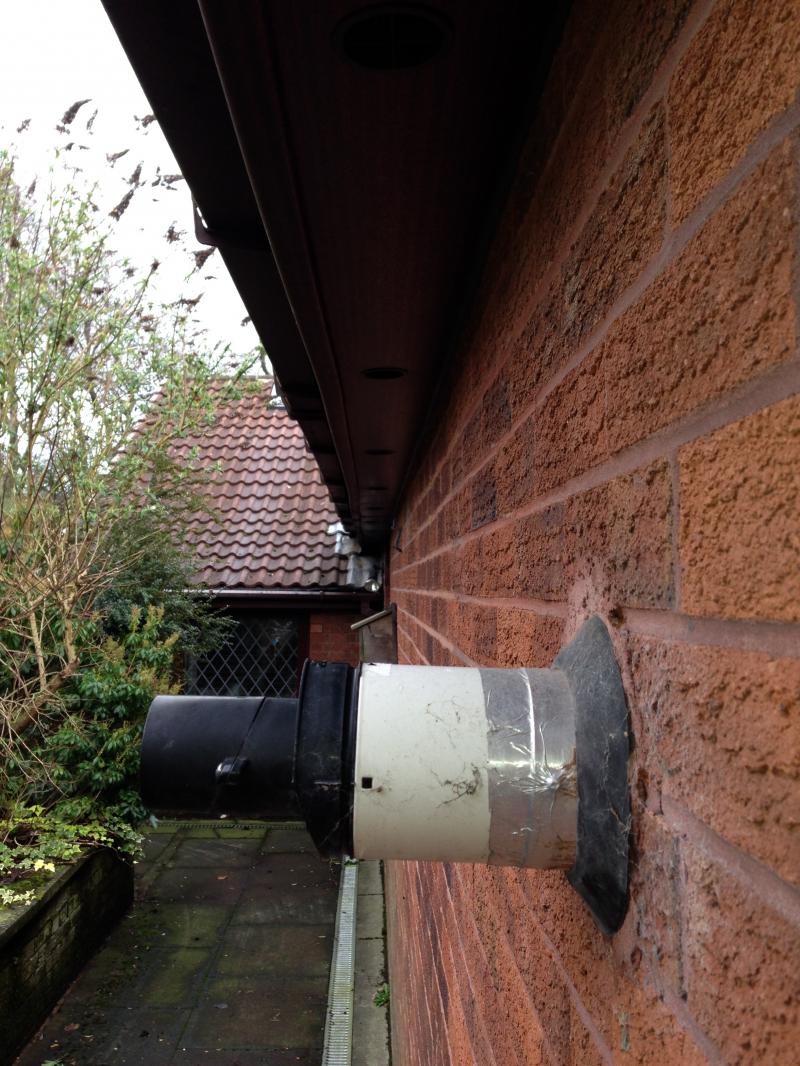Hi Hope you can help. Before I go any further I would like to state that I do not intend to carry out any repairs myself as I am a spark and will get an appropriately qualified installer to do it.
I have a WB Greenstar 40CDI Conventional.
I have recently noticed pools of water beneath the boiler and upon further investigation and after removing the cover I discovered that rainwater is entering the boiler via the outer flue ring, running down inside the casing and then pooling in the bottom and eventually dripping out and past all the expensive electronics. The inside of the casing is becoming corroded and there is a very good chance at some point the boiler electronics will get damaged.
The flue is only 350mm long horizontally plus the terminal. It has a incline on it going up and away from the boiler. Which speaking to WB seems to be correct.
1) Is there some sort of rain guard that I can fabricate or buy and fit?
2) The flue seems to protrude more than necessary making it more exposed (by around 100mm) can it be cut back more flush to the wall? Note the distance from the top of the flue to the underside of the gutter is 400mm.
Any help appreciated before my boiler blows!
I have a WB Greenstar 40CDI Conventional.
I have recently noticed pools of water beneath the boiler and upon further investigation and after removing the cover I discovered that rainwater is entering the boiler via the outer flue ring, running down inside the casing and then pooling in the bottom and eventually dripping out and past all the expensive electronics. The inside of the casing is becoming corroded and there is a very good chance at some point the boiler electronics will get damaged.
The flue is only 350mm long horizontally plus the terminal. It has a incline on it going up and away from the boiler. Which speaking to WB seems to be correct.
1) Is there some sort of rain guard that I can fabricate or buy and fit?
2) The flue seems to protrude more than necessary making it more exposed (by around 100mm) can it be cut back more flush to the wall? Note the distance from the top of the flue to the underside of the gutter is 400mm.
Any help appreciated before my boiler blows!


